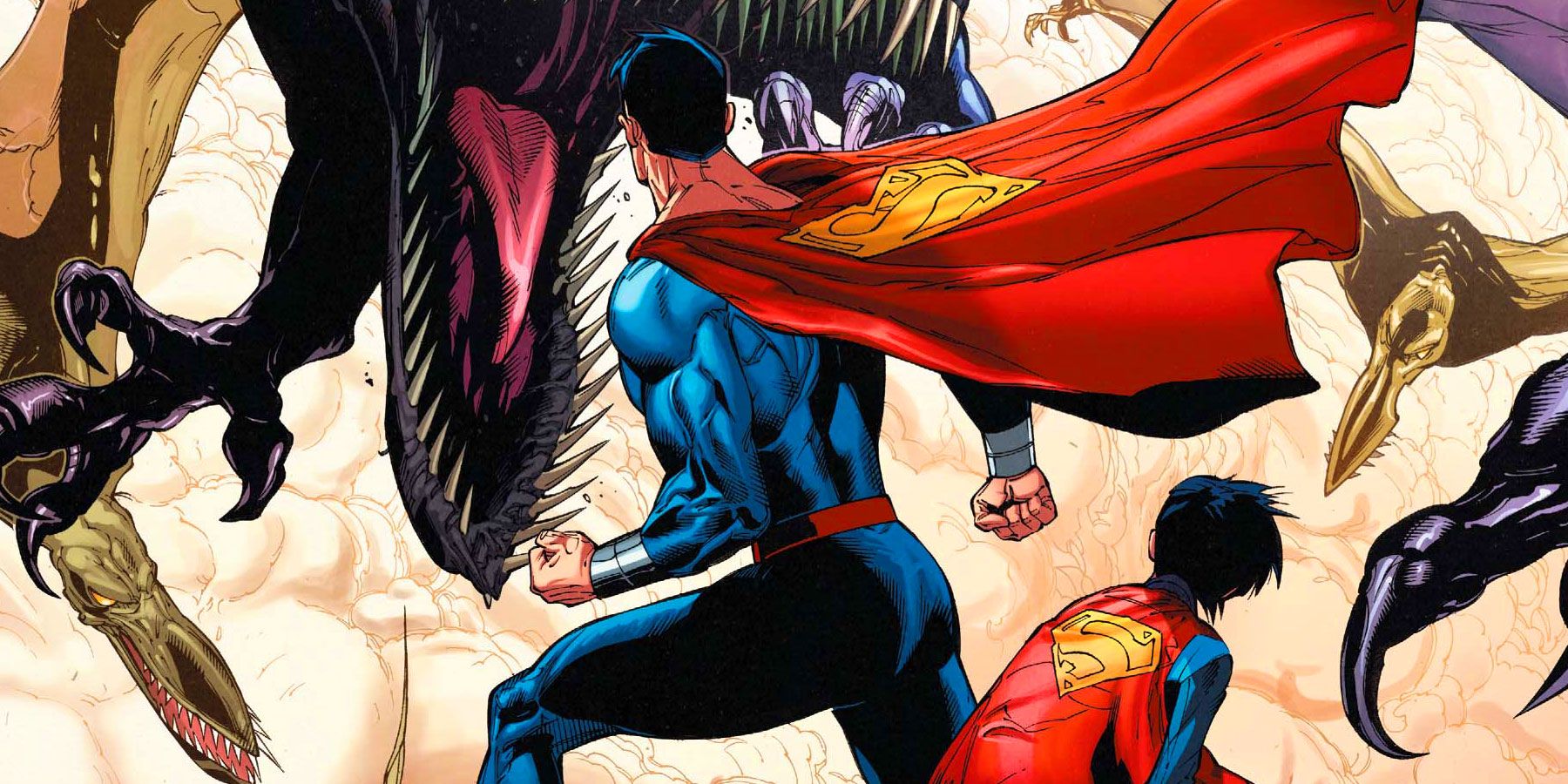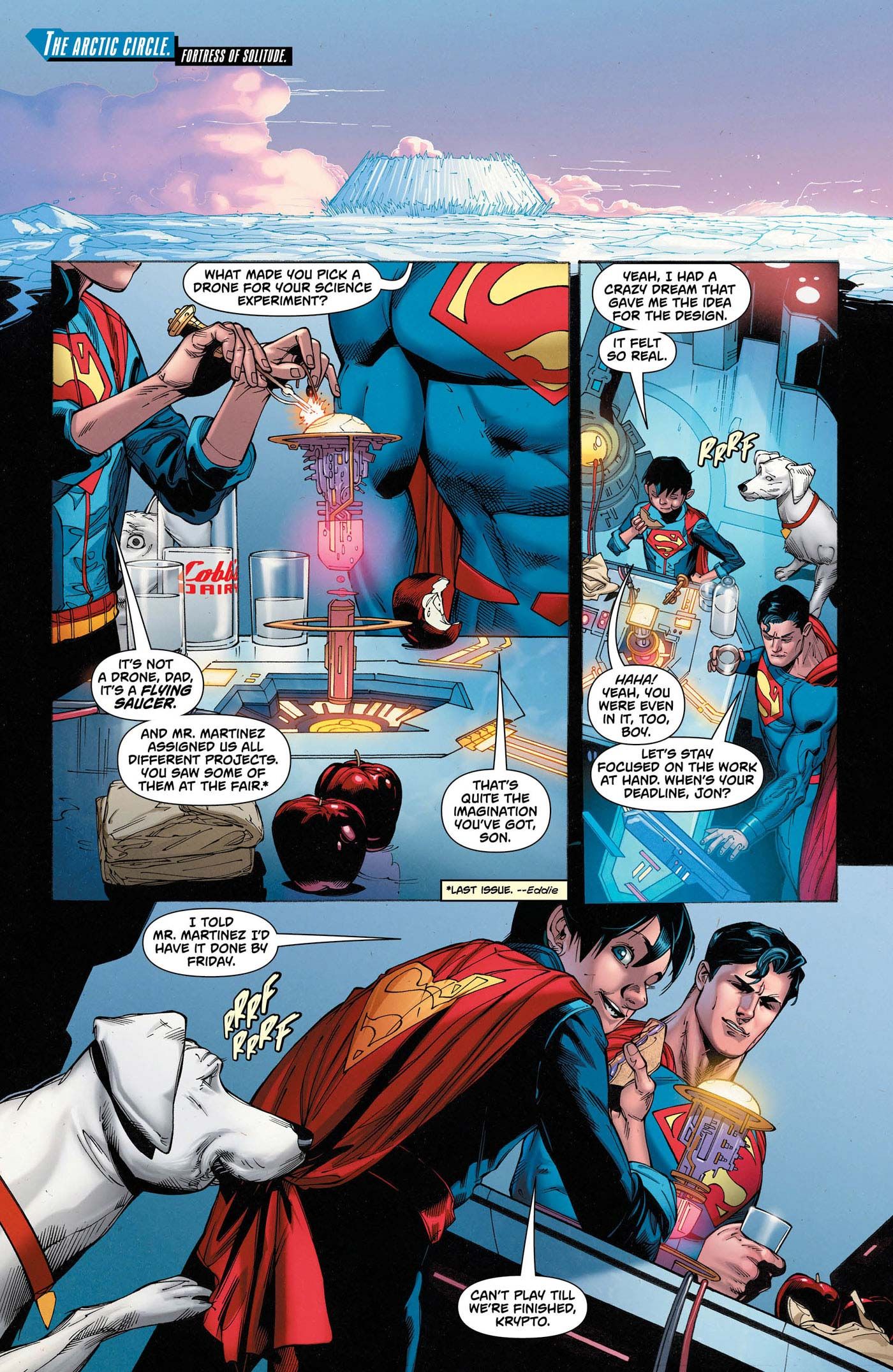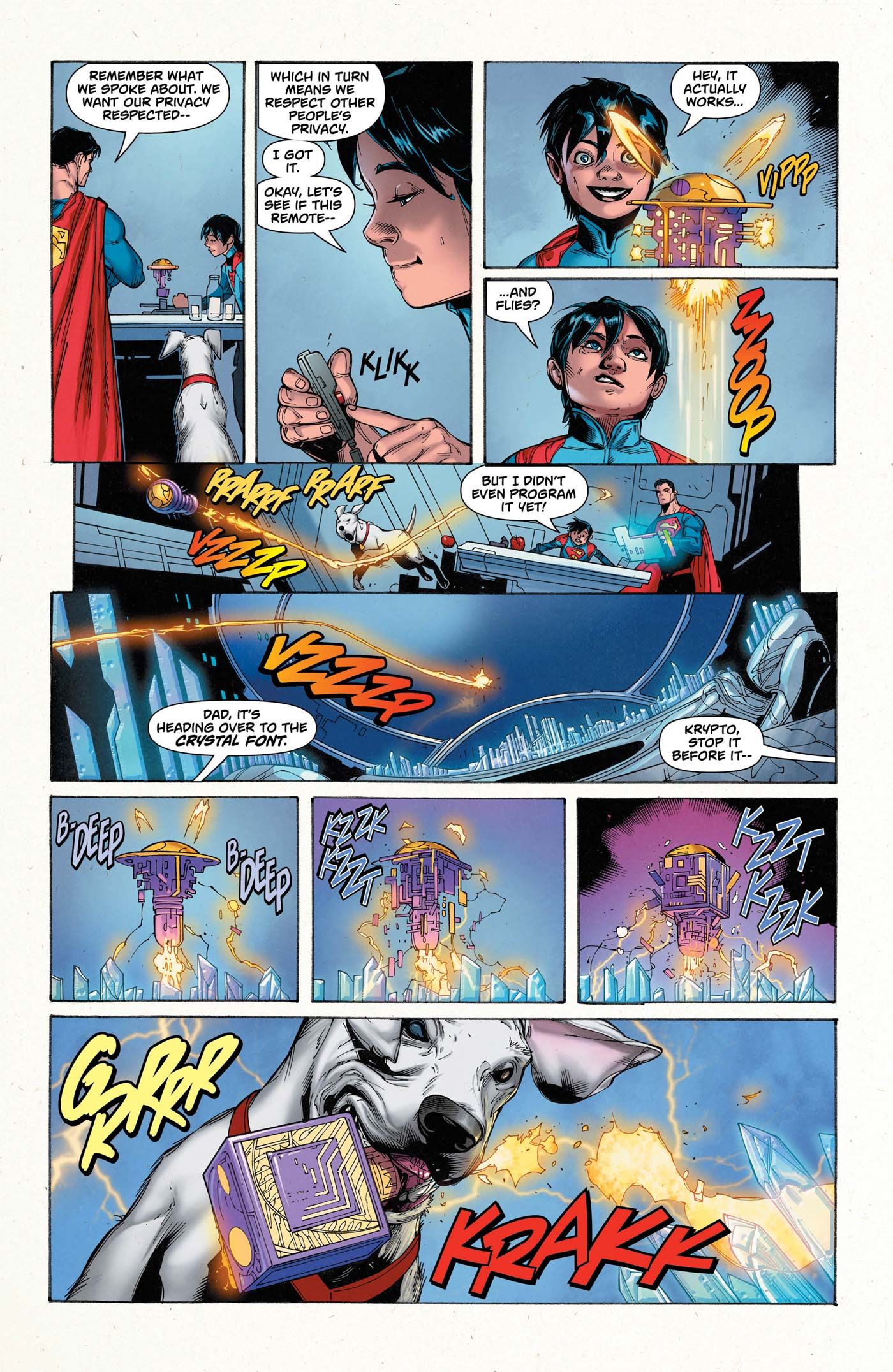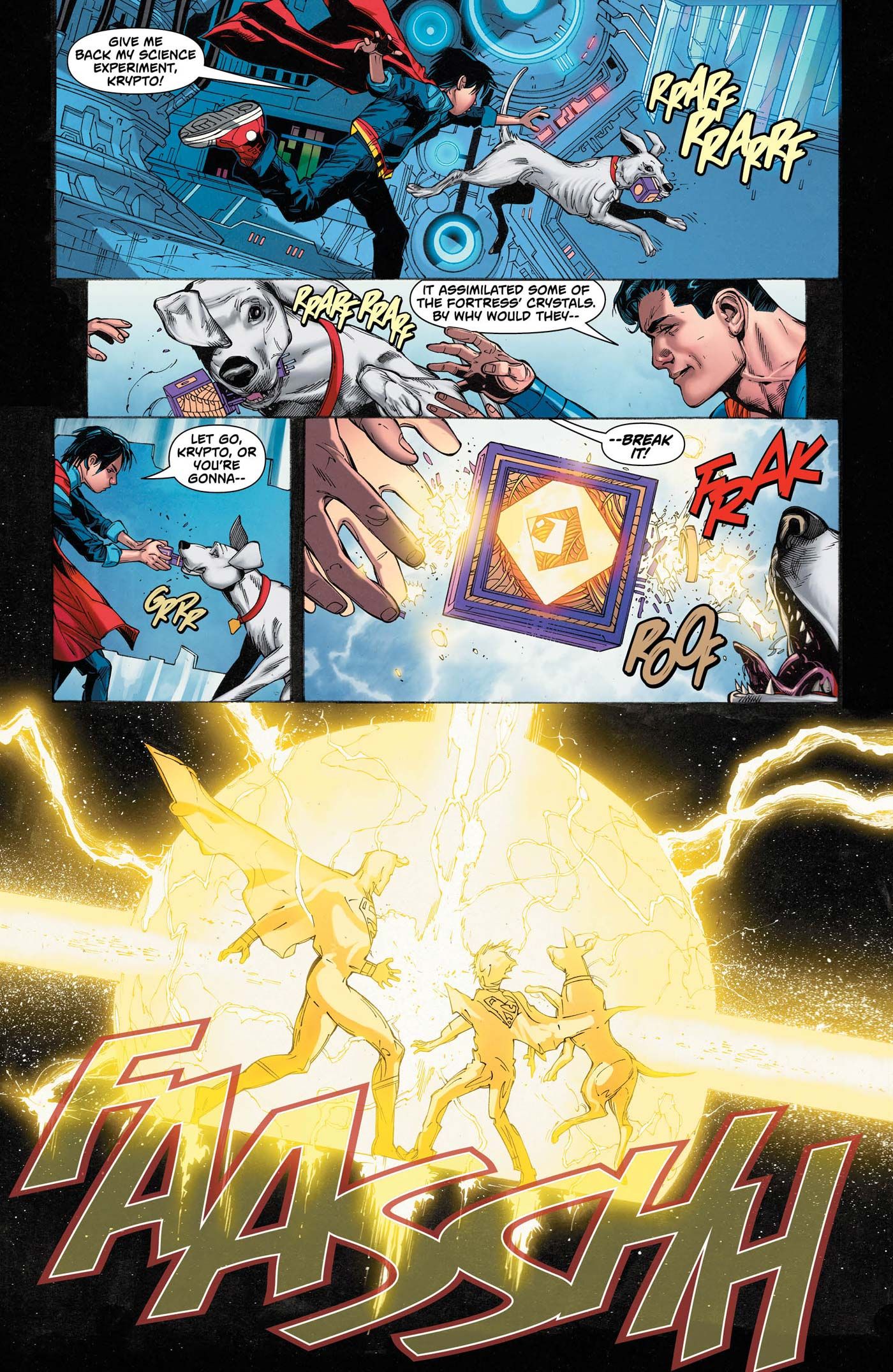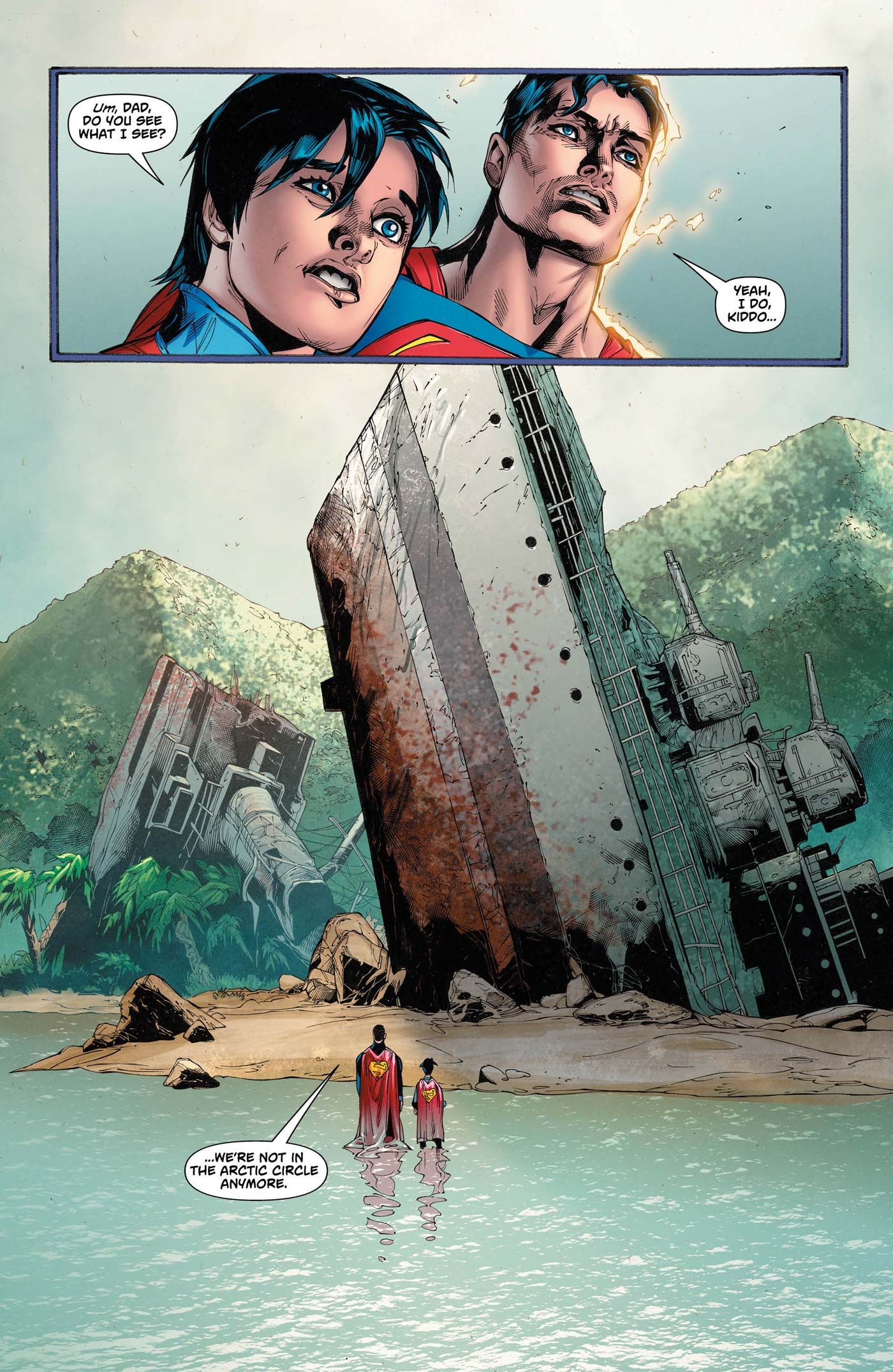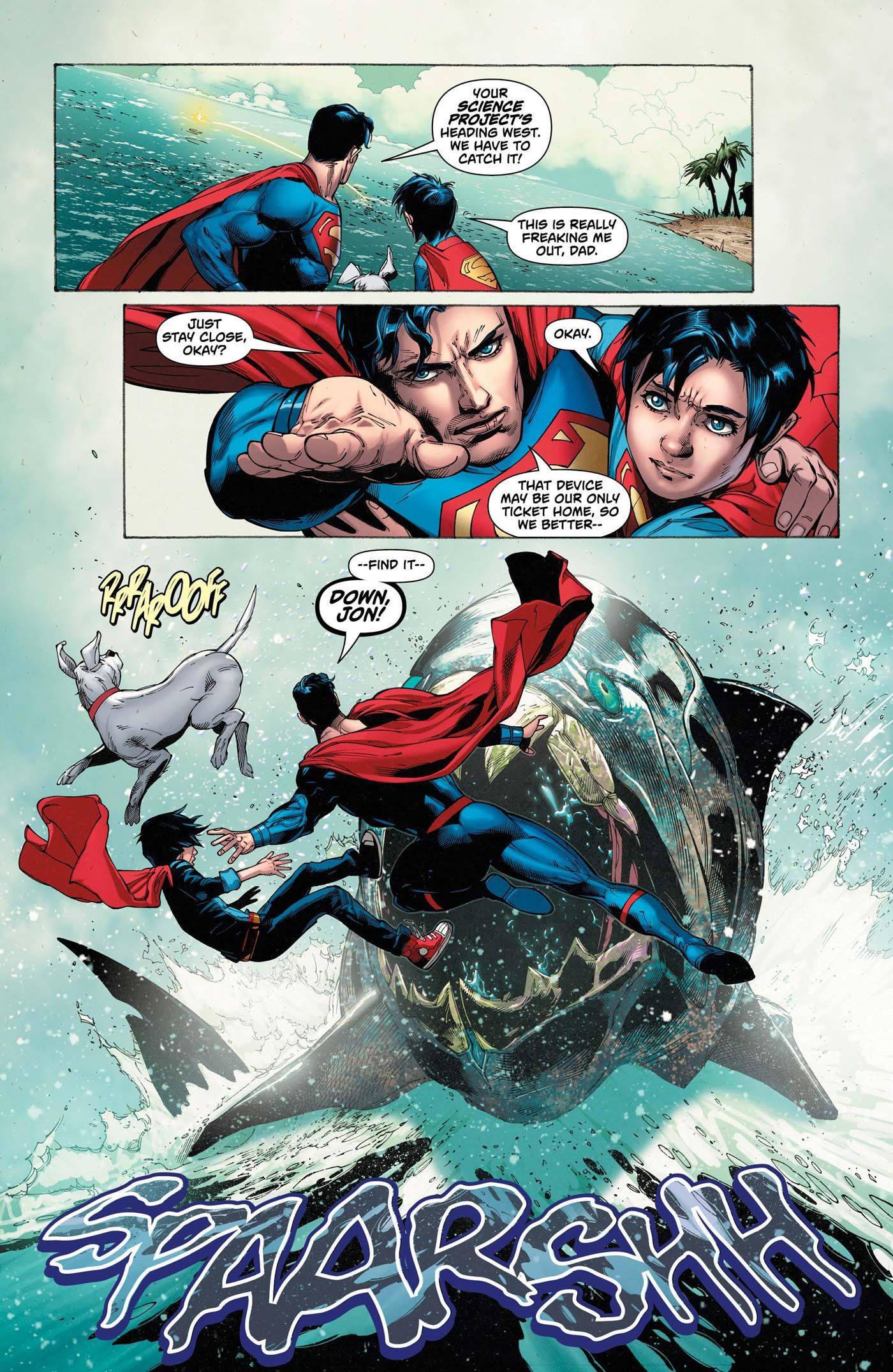"Superman" #7, currently available from DC Comics, may very well be the best single issue released this year. And while the writing team of Peter Tomasi and Patrick Gleason will have to wait and see if the Eisner Award judges agree, they aren't grounding the Man of Steel in the meantime.
Next week, "Superman" #8 arrives, featuring gorgeous artwork by Doug Mahnke, which finds the creative team smashing Clark Smith (not Kent) and his son Jon headfirst into Dinosaur Island for a two-part story that is not only an action-packed thrill ride that makes Jurassic Park look like a day at the Hamilton County Fair, but also a major piece of the puzzle the writers are laying out for the first year of "Superman."
The story, 'Return to Dinosaur Island,' doubles as a tribute to the late great Darwyn Cooke, and Tomasi and Gleason shared their thoughts about the cartoonist's impact on the industry with CBR. The writers also discussed the brilliance of Dinosaur Island as a concept, as well as the difficulties of selling war comics in the current marketplace.
CBR News: I loved this issue. Why isn't 'Return to Dinosaur Island' an ongoing series?
Peter Tomasi: It could be. [Laughs] We loved writing it, too. From your mouth to God's ear, as my mother used to say. It's a great, little two-parter that Pat and I were able to go and do. It's also a big part of the tapestry that we're weaving for the first year or so. It's a tip of the hat to Darwyn, but it's also integral to the jigsaw puzzle that is slowly coming together in "Superman."
I want to ask you about Darwyn but first, let's discuss Dinosaur Island. What makes the Robert Kanigher creation a perfect playground for comic book storytelling?
Tomasi: When it first came out, to be able throw soldiers and ships and tanks and planes against dinosaurs and everybody is firing Thompson submachine guns – if you're a 10-year old, you're in la-la land. [Laughs] It's a great concept, and it's too bad that Robert Kanigher didn't write it as a book because it was well ahead of "Jurassic Park."
Pat, I know you're not drawing it, but as an artist, visually, Dinosaur Island must offer so much.
Patrick Gleason: Doug [Mahnke] is one of my best friends -- we share a studio, and when we [Tomasi and Gleason] were talking "Superman: Rebirth" at the beginning, Doug was right there with us. And when we said we were going to have a story with Superman and dinosaurs, that's all we had to say. He was off the chain and running. He was all over it. There was even a moment where I contemplated doing the covers, but I was like, "I don't want to see me doing it. I want to see Doug doing it." [Laughs] And when the art started coming in, it was so amazing. And it's not just the dinosaurs and the big action, there is also a lot of heart between Superman and Jon, which is so important to our story. He really knows how to bring that stuff in. I learned a lot from him growing up and having him draw it was really just a no-brainer.
This story is dedicated to Darwyn Cooke, who we lost far too soon earlier this year. What was it about Darwyn that transcended the industry and made him such an integral part of the comic book community the past 15 years?
Tomasi: When I look back at Darwyn's body of work, this was a guy who could do everything. He could do dinosaurs with World War II guys and then cut to the 1950s and 1960s and do superheroes. Then, all of a sudden, he's doing books like "Parker." He just runs across the genres. He was able to take anything and just do it and do it right. They are all amazing pieces of work. It's a real shame that there isn't more stuff coming from Darwyn Cooke. The comic book business lost a great talent, and we lost a lot of great stories. This story was a nod and a tip of a hat to his greatness. This story means a lot to us.
Gleason: Pete had more history with Darwyn than I did. I never got to meet him, but as an artist and a writer, everything he did was always at the top of my read pile. He really inspired a lot of us as artists – and his writing, too. He was one of a kind. And like you and Pete said, we just lost him too early. It's a shame to think of what we've lost, but at the same time, we wanted to think of him and pay our respect in a medium and a story that would speak to him. It was the least we could do.
Superman and Jon find some dog tags that belonged to Johnny Cloud, and without giving too much away, the Losers, as a team, also play a role in this storyline. Over the years, DC Comics has tried to relaunch and reimagine its war comics like "G.I. Combat" and "Sgt. Rock" a number of times, and while the stories have often been strong, they haven't been able to catch on with retailers and readers. Why do you think war comics don't work, commercially?
Tomasi: It's a good question, and a question that I wrestled with as an editor. I did a few books. I did "Creature Commandos" and some other stuff. I was actually going to write a big war crossover before I left, but we ended up never getting it off the ground. We were going to go across all of the DC war titles and do a big crossover with Sgt. Rock and Haunted Tank and everything, and I was going to write it, but it never came to pass.
DC has tried. Jimmy Palmiotti had those great Darwyn covers on "Star Spangled War Stories," but I don't know. It just didn't work. I tried to understand it. I think the war stories are dramatic and vibrant, but it just hasn't caught on with younger readers for some reason, which is hilarious because they're playing "Call of Duty" and all of these other games and it boggles my mind that their minds can't be captured by another storytelling medium that could sill flesh out honor and duty and country be it on an island full of dinosaurs or storming a D-Day beach.
It's been a conundrum for me but I can say, for Pat and I to be able to do this story, it was a blast because I loved the Losers as a kid – the John Severin stuff and the Kanigher stuff was all amazing. If you look back at that Severin art now, it will blow you away. If people pick up the black and white collection of "The Losers" that Severin did – and there are even a few issues by [Jack] Kirby in the back – it's just crazy great. It's another reason I loved doing this story. Any chance that I get to do war books, I'll do them.
We're talking about "Superman" #8, but "Superman" #7 was an incredible story too. We've just finished the first big story arc and the relationship between Clark Smith, not Kent, and Jon for me has really been the strength of the book. Readers are talking about Superman for the first time in a long time. Why do you think comic book readers – and the industry – needed this version of Superman at this time?
Gleason: Dan Jurgens really got the ball rolling in "Superman: Lois and Clark." That was something that I picked up early on. And I think we just wanted to take it and run with it. We had this great opportunity to make this the real, ongoing Superman. We could say: "This is Superman. And this Superman is for everybody." That was a conversation that Pete and I had very early on. It was important that we didn't alienate readers. People that read "Superman" would continue reading it. It would be a fresh, new take on a character that they were familiar with. And one that new people could relate to and come in and read it. And I think Clark and Jon's relationship is a big part of that. And I also want to bring in Lois, because everybody always leaves out Lois. She's a big part of our story, and writing her is just as much fun as writing Jon.
The family dynamic is something that pretty much anyone can relate to – whether you’re a kid or a parent, a mother or a father. We've all been there in one way or another. And bringing that to the forefront puts Superman into a whole new situation. We know what he can do and what he stands for but now he has a family and that can throw a monkey wrench into things. At the same time, this family is likeable and it's really about them and the world outside of them. They're a real tight family unit and we want to see them stay that way.
I think people are hungry for that kind of stuff. We do like to see people get along sometimes. [Laughs] I know we're going against the odds, but come on. When you think about "The Incredibles" or "Fantastic Four," there is a lot of precedent for that. And that's something that we talked about being missing.
Tomasi: The family is basically up against the outside forces of the world. And these stories are about how they react to those forces and are changed by them and evolve. There have already been lots of examples. Even in our first issue, Jon gets upset at the dinner table. He's tired of lying and not letting his identity be out there. We want to play it real. We really want to play with what these characters are feeling and are going through as their outside lives obviously have a big thing to do with what happens under their roof every day and night too.
Gleason: I know some people weren't happy with the idea that Clark got upset with Cobb Branden when he brought Jon in for "Superman" #2, but we just thought that Superman was a little off-balance because it's his kid, so he's not going to respond perfectly every time. He's not perfect. This is the human side of him. He apologized to him in #7, and I think that's what grounds him. That's what makes him Superman. He's very good, but he's a dad.
Tomasi: He's a dad, and he's Superman. We're not going to forget any of those elements, because that's what makes the storytelling dramatic and fun and interesting to read. Those are all qualities that we want to keep juggling and make sure that we don't lose any of them.
You mentioned Cobb Branden. Should we trust him? Because I don't trust him, or Doc Brooks.
Tomasi: Let's just say you're very perceptive. [Laughs]
"Superman" #8 arrives on October 5.

